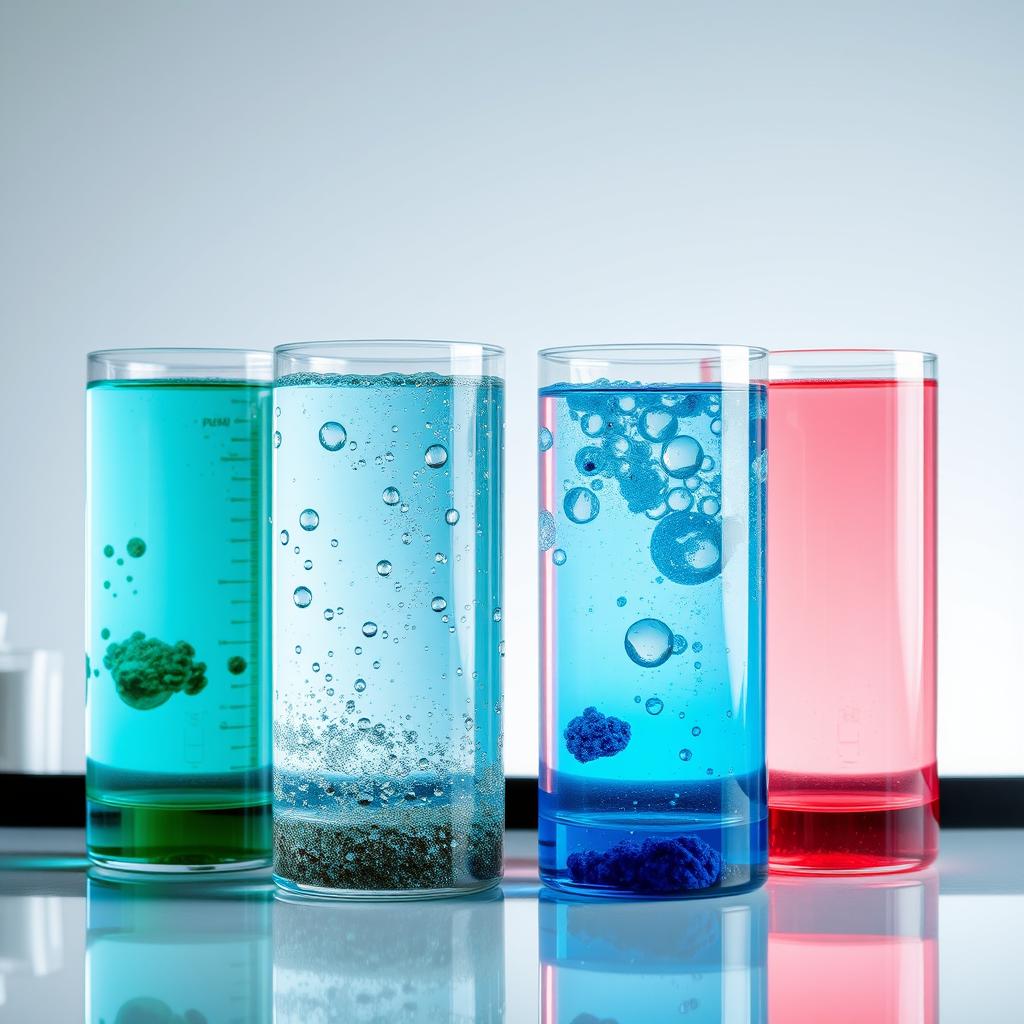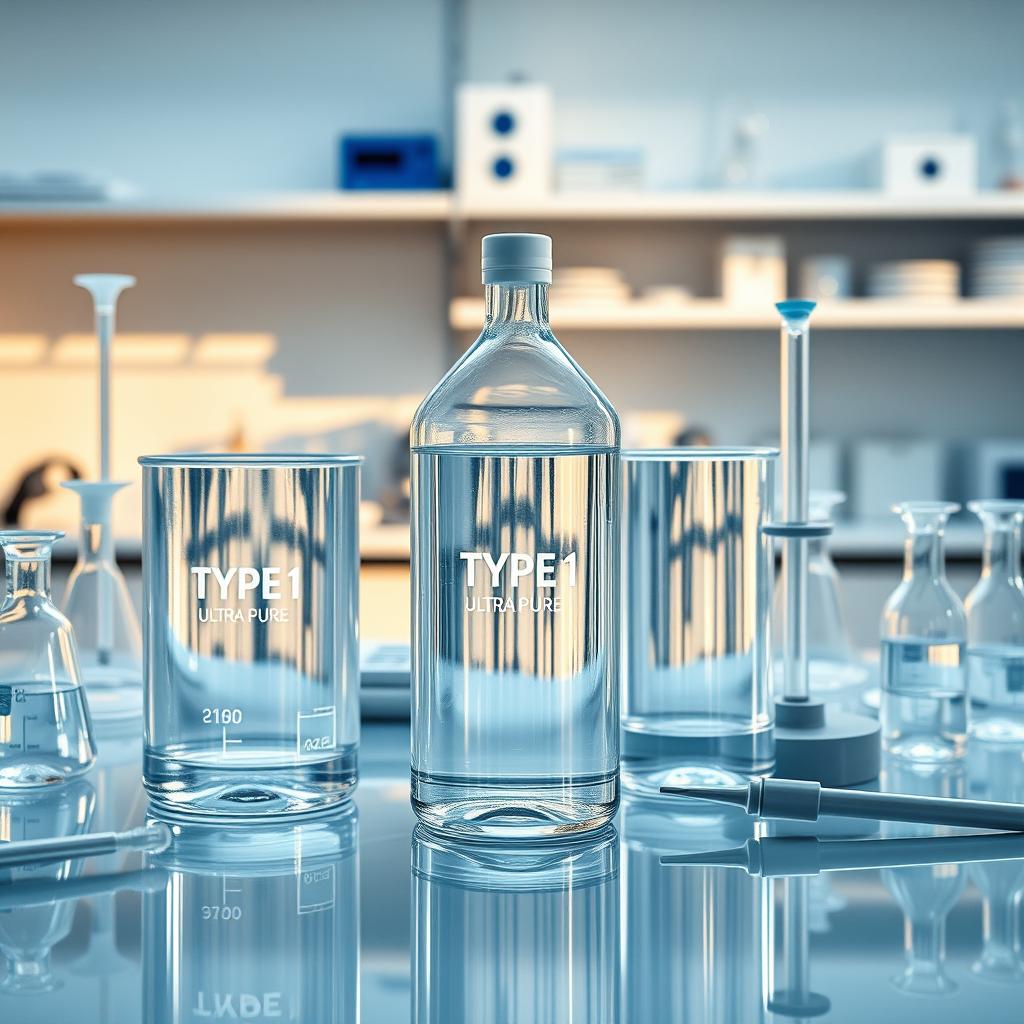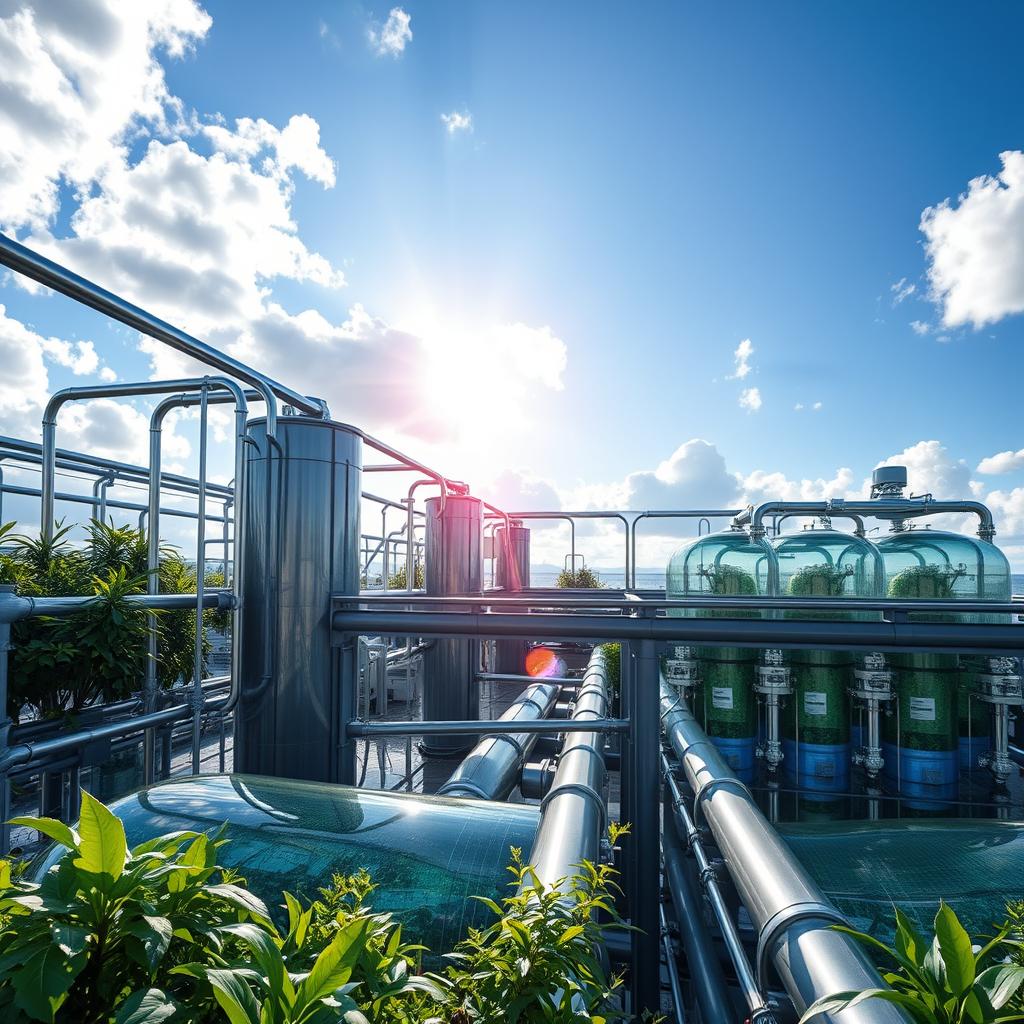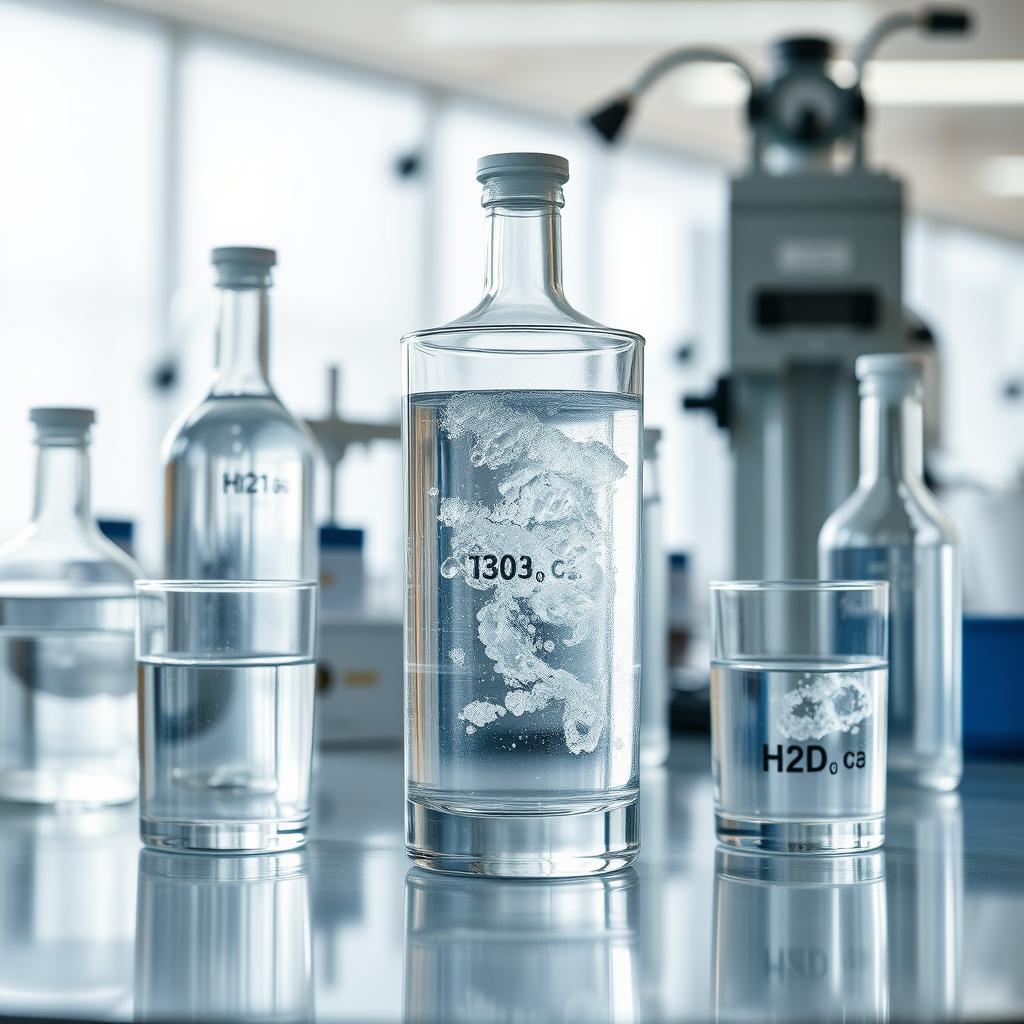What’s the big deal about chemical grades of water in labs? They’re key for research accuracy and safety, and they help manage costs. Water quality standards are set to make sure the right water is used for each task. Chemical grades of water help decide if water is good for lab work. It’s important to know about the different types of water grades and what they’re used for. Choosing the right water is crucial for good research and safety. Water grades are sorted by how pure they are, thanks to quality standards. These standards help lab workers pick the best water for their work, improving results and saving money.
Click to use Silverigroup personal shopper services
Key Takeaways:
- Chemical grades of water are essential in laboratory settings to ensure research accuracy and safety.
- Water quality standards determine the suitability of water for various laboratory applications.
- Chemical grades of water are categorized based on their purity levels.
- Understanding the different chemical grades of water and their applications is vital for selecting the appropriate water grade.
- Water quality standards help laboratory professionals choose the right water grade for their specific needs.
- Chemical grades of water impact research accuracy and safety while managing costs.
- Water quality standards play a crucial role in limiting laboratory operating costs.
Understanding Chemical Grades of Water
Chemical grades of water are set for both technical and economic reasons. These standards help figure out the water purity levels and water treatment grades needed for labs. Knowing these grades is key to picking the right water for lab work. The idea of water purity levels talks about the amount of impurities in water. Labs need different water purity levels for their work. Some labs need super-pure water, while others can use water with more impurities. The water treatment grades are also vital. They show how much treatment the water has had to clean it. Different labs need different treatment levels. Here are some main things that affect the choice of water treatment grades:
- Level of impurities in the water
- Type of lab work
- How pure the water needs to be
Click to buy citric acid from Silvairgroup
Standards set different water grades for labs for both technical and economic reasons. These grades make sure the water in labs is the right quality and purity. By knowing the different water purity levels and water treatment grades, labs can pick the best water for their needs.

In the next section, we will explore the introduction to laboratory water grades. We will look at the different types of water grades and their uses.
The Importance of Water Quality in Laboratory Settings
Water quality is key in labs, affecting research, costs, and safety. Contaminants can mess up research, leading to wrong conclusions and risks. Following drinking water rules is also vital to keep labs safe and clean. Some important points for lab water quality include:
- Preventing contamination to ensure reliable research results
- Managing costs associated with water treatment and maintenance
- Protecting laboratory personnel from potential health risks
Click to buy frozen a grade beluga fish from Silverigroup
By focusing on water quality, labs can avoid mistakes, save money, and keep workers safe. As laboratory settings change, water quality’s role will grow. It’s important to keep up with new water treatment and management methods. The right water quality is essential for good research, cost control, and safety. Labs must understand water quality’s importance and manage it well. This ensures research integrity and keeps workers safe.

Type 1 Water: Ultra-Pure Laboratory Grade
In critical laboratory settings, chemical grades of water are vital for accurate research. Type 1 water, the purest form, is key for tasks like HPLC mobile phase prep and sample dilution.
Type 1 water has extremely high purity, with very few impurities. It’s perfect for sensitive lab gear and tasks where small contaminants can skew results. Key features include:
- Very low conductivity
- Very low total organic carbon (TOC) levels
- Very low bacterial and particulate counts
For top lab work, Type 1 water is a must. It’s needed for:
- High-performance liquid chromatography (HPLC)
- Gas chromatography (GC)
- Mass spectrometry (MS)
In short, Type 1 water is the purest, crucial for high-stakes lab work. Its unmatched purity and low impurities make it perfect for sensitive lab tasks.
| Water Type | Purity Level | Applications |
|---|---|---|
| Type 1 | Ultra-pure | HPLC, GC, MS |
| Type 2 | General laboratory grade | General laboratory applications |
| Type 3 | Basic laboratory grade | Basic laboratory applications |
Type 2 Water: General Laboratory Applications
Type 2 water is key in many lab tests and research. It’s used to make buffers, pH solutions, and culture media. It’s also a feed for Type 1 water systems. The making of Type 2 water uses water treatment grades that follow strict wastewater quality criteria. Here are some common uses of Type 2 water:
- Preparation of buffers and pH solutions
- Microbiological culture media preparation
- Feed to Type 1 water systems
Creating Type 2 water involves different water treatment grades. These grades follow strict wastewater quality criteria. This ensures the water is pure and ready for lab use.
Storage Requirements
Keeping Type 2 water clean and safe is crucial. It needs to be stored in clean, sterile containers. Also, the water’s quality should be checked often. This way, labs can use Type 2 water effectively.
| Water Type | Application | Storage Requirements |
|---|---|---|
| Type 2 | General laboratory applications | Clean and sterile containers, regular quality monitoring |
Type 3 Water: Basic Laboratory Grade
Type 3 water is the lowest grade for labs, with more water contaminant levels than others. It’s good for basic lab tasks like rinsing glassware and filling autoclaves. It can also be used to make Type 1 lab water systems. The water quality standards for Type 3 water are not as strict as Type 1 and Type 2. Still, it’s crucial to check and keep the water quality up. This means testing the water often and adjusting the treatment if needed.
- Glassware rinsing
- Heating baths
- Filling autoclaves
- Feed to Type 1 lab water systems
In short, Type 3 water is a basic grade for labs. It’s good for many lab tasks. Labs can make sure they use the right water by knowing the water quality standards and water contaminant levels for Type 3.
Water Purification Technologies and Methods
Water treatment grades and chemical grades of water are key in labs. They affect the accuracy and trustworthiness of research findings. Various technologies purify water, each with its own benefits and drawbacks. The right technology depends on the needed water purity and the lab’s specific needs.
Some common water purification technologies include:
- Distillation systems, which use heat to separate impurities from water
- Reverse osmosis, a membrane-based technology that removes impurities by applying pressure
- Deionization processes, which use resins to remove ions and other impurities from water
These methods help achieve the needed water treatment grades and chemical grades of water for labs. For instance, distillation systems are great for making very pure water for delicate instruments. On the other hand, reverse osmosis is often used for general lab needs.
| Technology | Description | Application |
|---|---|---|
| Distillation | Heat-based separation of impurities | High-purity water production |
| Reverse Osmosis | Membrane-based removal of impurities | General laboratory applications |
| Deionization | Resin-based removal of ions and impurities | Production of ultra-pure water |
In conclusion, picking the right water purification technology is crucial. It depends on the lab’s specific needs and the required water quality. By knowing the strengths and weaknesses of each method, labs can choose the best one for their work.

Quality Control and Testing Standards
Keeping water quality standards up is key in labs. Quality control checks if the water is pure enough. It involves testing and watching over the water to stop contamination and keep research right.
Important parts of quality control are:
- Regular testing of water samples
- Monitoring of water treatment systems
- Following standard operating procedures
By sticking to these steps, labs can make sure their water is clean. This is vital for getting precise research results. Quality control is a never-ending task that needs careful focus and a strong commitment to cleanliness. Labs that focus on quality control can be sure their research is accurate and trustworthy.
Economic Considerations in Water Grade Selection
Choosing the right water grade for labs is all about money. Labs need to find a balance between quality and cost. They look at the upfront costs, ongoing expenses, and how much they’ll save in the long run. The levels of water contaminants and how well the water meets quality standards are key to making a smart choice.
The price of systems to clean and purify water varies a lot. Initial investment costs can be high, but they pay off over time. For example, using clean water means less need for fixing or replacing equipment. This saves money in the long run.
Factors Affecting Economic Considerations
- Initial investment costs: The cost of purchasing and installing water treatment and purification systems.
- Maintenance expenses: The cost of maintaining and replacing equipment, as well as the cost of chemicals and other supplies.
- Long-term ROI analysis: The cost-effectiveness of a particular water grade over its lifespan, taking into account factors such as water contaminant levels and wastewater quality criteria.
By carefully looking at these factors, labs can pick the most affordable water grade. This ensures they meet quality standards without breaking the bank.
Best Practices for Water Storage and Handling
Storing and handling chemical grades of water properly is key to keeping water quality high. This is very important in labs where water quality affects research results and safety. To keep water quality up, it’s important to follow the best practices for storage and handling.
Choosing the right container for water storage is crucial. Containers should be made of materials that don’t harm the water, like glass or high-density polyethylene. They also need to be cleaned and sanitized often to avoid contamination. Here are some tips for picking the right container:
- Use containers made just for storing water
- Don’t use containers that have been used for other things
- Clean and sanitize containers regularly
To prevent contamination, it’s important to handle water carefully. Use clean tools and follow proper handling steps. It’s also key to keep storage containers and tools in good shape. By doing these things, labs can keep their water clean and ready for research, no matter the type of water they use.
By following these best practices, labs can keep their water supply clean and safe. This reduces the chance of contamination and makes sure research is accurate and reliable. Whether using chemical grades of water or water treatment grades, proper storage and handling are key to getting great research results.
| Container Type | Material | Cleaning Frequency |
|---|---|---|
| Glass | Glass | Weekly |
| High-Density Polyethylene | High-Density Polyethylene | Monthly |

Environmental Impact and Sustainability
Laboratories are working hard to reduce their environmental impact. They focus on wastewater quality and following drinking water rules. Sustainable water management practices are key to lowering their environmental footprint. This means using efficient water treatment and following wastewater quality standards to avoid pollution and protect water life. Some important steps for labs to be more sustainable include:
- Using water-saving devices and systems for greywater reuse
- Choosing eco-friendly cleaning products and cutting down on chemical waste
- Buying energy-saving tools and using renewable energy
By taking these steps, labs can lessen their environmental harm. They also save money and get a better reputation. Labs also need to follow drinking water rules to keep water clean and safe. They do this by testing water often and stopping backflow and cross-connections. Labs that focus on sustainability and follow rules help make the world a healthier place for the future.
| Strategy | Benefits |
|---|---|
| Water conservation | Less water used, lower costs |
| Environmentally friendly cleaning products | Less chemical waste, better air quality |
| Energy-efficient equipment | Less energy used, fewer greenhouse gases |
Conclusion: Selecting the Right Water Grade for Your Laboratory Needs
Choosing the right water grade is key for lab success. Knowing about water quality standards and chemical grades of water helps get accurate results. It also makes processes cheaper and keeps the lab safe. Every lab is different, needing either ultra-pure Type 1 water or basic Type 3. Knowing your needs helps pick the best water for your lab. This choice improves your lab’s work and fits your budget.
Good water storage and handling practices boost your lab’s water supply. Using the right water purification tech and following rules keeps water quality high. This also reduces harm to the environment. Choosing and managing water grades well helps your lab succeed. It leads to precise results, saves money, and keeps everyone safe. Prioritizing water quality is crucial for your team’s safety and success.
FAQ: Chemical Grades of Water
What are the different chemical grades of water?
There are three main types of water: Type 1, Type 2, and Type 3. Each has a different purity level. They are used in various ways in labs.
Why is water quality important in laboratory settings?
Water quality is key in labs because it affects research results and safety. The right water grade prevents contamination. It also ensures accurate and reliable research.
What is Type 1 water, and when is it required?
Type 1 water is the purest and needed for critical lab tasks. This includes making HPLC mobile phases and diluting samples. It’s vital for accurate research.
How is Type 2 water used in laboratories?
Type 2 water is used for general lab tasks. This includes making buffers, pH solutions, and culture media. It can also feed Type 1 systems.
What is the role of Type 3 water in laboratory settings?
Type 3 water is the least pure but still useful. It’s for rinsing glassware, heating baths, and filling autoclaves. It can also feed Type 1 systems.
What technologies are used for water purification in laboratories?
Labs use several methods to purify water. These include distillation, reverse osmosis, and deionization. They ensure water is pure for different lab needs.
How is water quality controlled and tested in laboratories?
Labs follow strict quality control and testing. They use protocols to check water quality. This ensures it meets standards and prevents contamination.
What economic factors are considered when selecting water grades for laboratories?
Labs consider costs when choosing water grades. They look at initial costs, maintenance, and long-term savings. They aim to balance quality with budget.
What are the best practices for water storage and handling in laboratories?
Proper water storage and handling are essential. Labs should choose the right containers and follow maintenance. This keeps the water quality high.
How can laboratories address the environmental impact of water use?
Labs can reduce their environmental impact. They can treat wastewater and follow drinking water rules. This helps manage water use sustainably.

